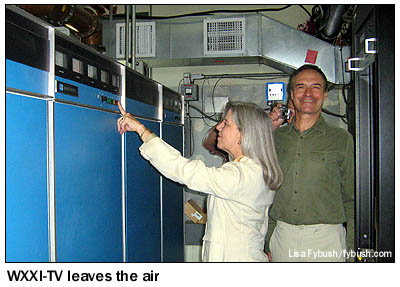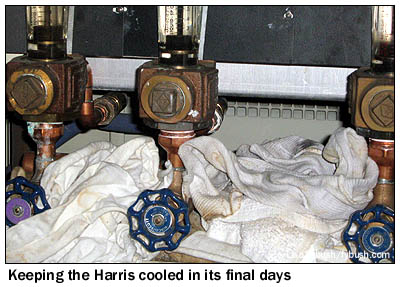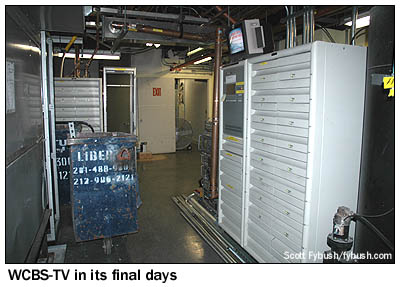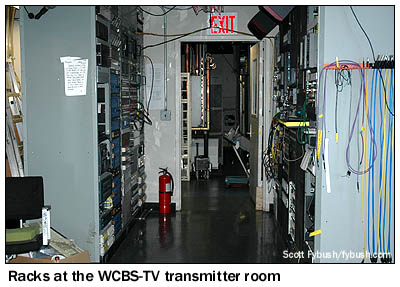
|
|

July 24, 2009
The Last Analog TV Stragglers Go Dark
So you thought June 12, 2009 was the last day of analog TV in the United States, right? (Or even February 19, a date that still shows up on a surprising number of local stations' websites that were never edited when the date changed last winter.)
Not quite. As DXers know all too well, a hundred or so stations around the country stayed on the air with analog signals for up to an additional month, making the NAB's Mike DeSerio and his Spanish-speaking counterpart briefly famous as their instructional "nightlight" videos looped over and over and over again.
And that meant we had a few more shots at seeing those "off" buttons being pressed to end the analog TV era...
 |
 |
What you see above is the end of the line for analog TV in Rochester, a few minutes after 10 AM on July 10, as WXXI-TV executive VP/GM Susan Rogers took analog channel 21 off the air after nearly 44 years of service. VP of technology and operations Kent Hatfield is hidden behind her, and that's engineer Jan Pazral standing next to her. On the right, you can see the innards of the old Harris that barely limped to the finish line - Jan and his colleagues Nolan Stephany and Russell Roby had to fight several nasty coolant leaks to keep the beast running in its last months, and it's impressive that it made it all the way to the end. (I think this was only the second main transmitter WXXI had in all that time with analog TV.)
 |
 |
But July 10 wasn't quite the end of the nightlight line - the final drop-dead date for analog full-power TV was actually two days later, on July 12, and one of the last stations standing was also one of the first stations in the country. WCBS-TV (Channel 2) in New York may even have been the very, very last analog station on the air, since there were unconfirmed reports from viewers in the region of continued nightlight operation into the morning of July 13.
In any event, we made it up to the 83rd floor of the Empire State Building a few days earlier, on July 7, for a tour of the warren of rooms that make up the WCBS transmitter facility. We'll explore it in more detail in a future Site of the Week, but for now we look at the analog facilities that were silenced a few weeks back: the Harris transmitter that went into service shortly after 9/11 (when WCBS was the only New York VHF station to stay on the air, thanks to its aged GE backup transmitter up in this space, now long gone) and the racks of equipment that are now dark and silent.
- Previous Site of the Week: WQXR, New York
- Next Week: Providence, R.I.
- Site of the Week INDEX!
- How can you help support Site of the Week? Click here!
- Submit your suggestions for a future Site of the Week!
